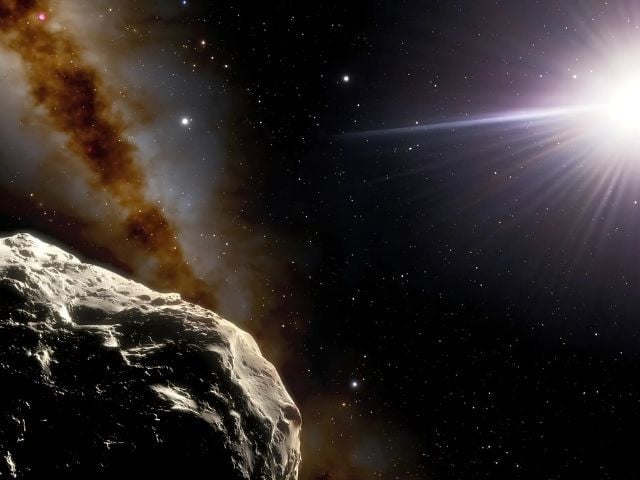WORLDWIDE:
New research has uncovered that early Earth may have contained far more hydrogen than previously thought, potentially rewriting long-held theories about the planet’s development and the source of its water.
University of Oxford Scientists analysed a rare meteorite known as an enstatite chondrite, which dates back 4.6 billion years.
The study, published Wednesday in the journal named “Icarus”, found that hydrogen present in the space rock was largely intrinsic and not the result of later contamination.
This indicates that Earth’s building blocks may have included enough hydrogen to support the formation of water molecules from the beginning, rather than relying solely on water-bearing asteroids.
“We assumed that Earth has water today because of quite a lucky scenario where it had been hit by these asteroids,” said lead author Tom Barrett, a doctoral student in Oxford’s department of Earth sciences.
“But what we’ve demonstrated in this study is that actually the material which formed Earth in the first instance actually did contain a lot of hydrogen and oxygen.The discovery of hydrogen in this meteorite means that Earth potentially could have been hydrated or wet from its initial formation” he said.
The presence of hydrogen from Earth’s formation challenges the view that the early planet was dry and uninhabitable until later bombardment.
To detect the elusive element, researchers used a sophisticated method called X-ray Absorption Near Edge Structure (XANES) spectroscopy, requiring a particle accelerator.
“It’s not exactly the kind of experiment that you can do in the garage,” Barrett noted.
Despite the potential implications for planetary science, Barrett cautioned that the discovery does not necessarily suggest life could have developed earlier. A planet’s habitability, he said, may depend more on how it evolves than on its original ingredients.
Barrett plans to expand his research by studying additional meteorites to determine how much hydrogen was originally present on early Earth and how much may have arrived from space.
Understanding how Earth developed its present-day characteristics remains a central question for planetary scientists, said study co-author James Bryson, an associate professor in Oxford’s department of Earth sciences.
“We now believe that the building blocks of our planet — which we can examine through these rare meteorites — were significantly richer in hydrogen than previously assumed,” he said.
He added that the discovery lends weight to the theory that water formation on Earth could have been a natural result of its original composition, rather than a rare outcome of impacts from water-bearing asteroids.
Matt Genge, a planetary scientist at Imperial College London who was not involved in the study, described the findings as “interesting,” but said they were not strong enough to overturn the widely accepted theory regarding the origins of Earth’s water.
The meteorite studied had likely been in Antarctica for hundreds of thousands of years, raising concerns that some of its hydrogen content may have formed after it landed on Earth, according to experts.
“Just the fact that there is a possibility makes the argument less strong,” said Matt Genge, a planetary scientist at Imperial College London, who was not involved in the research.
Study co-author James Bryson acknowledged that the meteorite had probably been exposed to Earth’s environment for a long time. However, he defended the findings, saying the research team had taken extensive precautions to reduce the influence of terrestrial water.
“We believe we’ve done everything possible to limit the impact of Earth-based contamination,” Bryson said in an emailed response to Genge’s remarks. “We estimate that perhaps 15% of the hydrogen in the meteorite is from Earth.”
He added that some hydrogen likely did arrive from comets and asteroids, but the new findings suggest such sources made up only a small portion of the total hydrogen found on Earth.
“So Matt’s assessment is valid, but we’ve worked hard to address his concern,” Bryson said.



